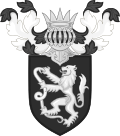Senarica
Frazione in Abruzzo, Italy and former republic From Wikipedia, the free encyclopedia
Senarica (in Old Italian: Sinarcho) is a village in the Abruzzo region of central Italy. With a population of fewer than 300 people, it is a frazione of the comune of Crognaleto.[1] Vomano river flows nearby and the village is visible on a spur overlooking the gorge of the river.
You can help expand this article with text translated from the corresponding article in Italian. Click [show] for important translation instructions.
|
It is west of Teramo City, in the Province of Teramo.
History
Summarize
Perspective
Republic of Senarica | |||||||||
|---|---|---|---|---|---|---|---|---|---|
| 1343–1797 | |||||||||
| Status | Microstate | ||||||||
| Capital | Senarica | ||||||||
| Common languages | Italian | ||||||||
| Religion | Roman Catholic | ||||||||
| Government | Republic | ||||||||
| Historical era | Early modern | ||||||||
• Established | 1343 | ||||||||
• Disestablished | 1797 | ||||||||
| |||||||||
| Today part of | Italy | ||||||||
Senàrica and the neighbouring village Poggio Umbricchio became independent in circa 1343, when Queen Joanna I of Naples granted the area independence because of the inhabitants' fierce opposition against the enemy troops of Milan under Lord Luchino I Visconti's relative Ambrogio Visconti. Impressed by the splendor of the dogal Republic of Venice, Senàrica rulers adopted a similar republican government, with an elected doge as head of state.[2] The king of Naples Ferdinand IV did not believe in the existence of the independent republic and sent some officials to Senàrica for investigation. Driven by Prime Minister Bernardo Tanucci, he ordered its annexation in 1797.[3]
See also
References
External links
Wikiwand - on
Seamless Wikipedia browsing. On steroids.


